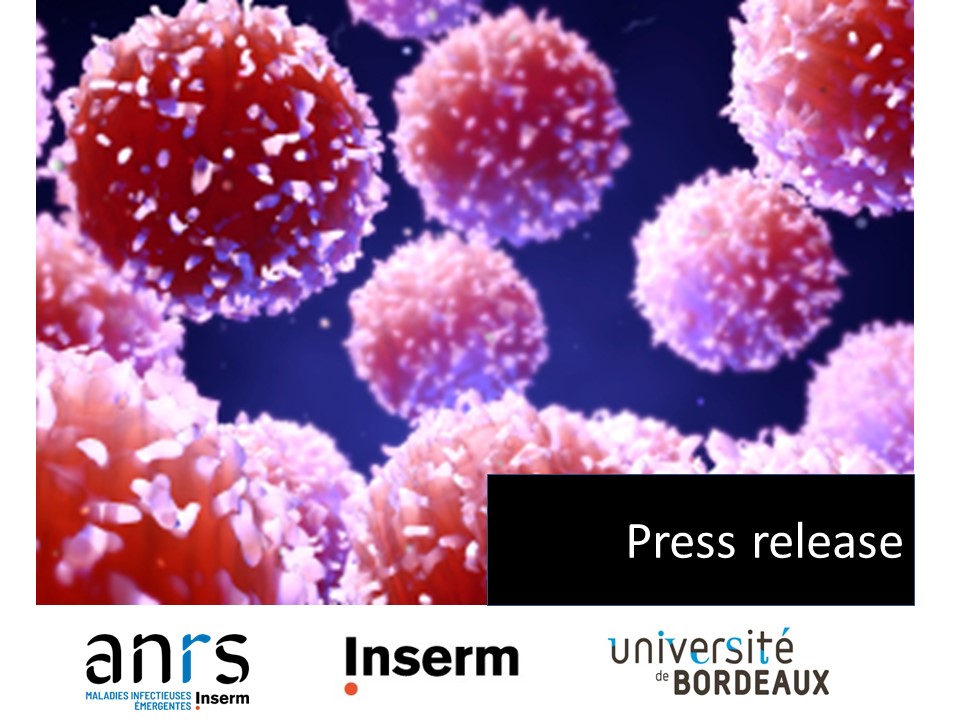
CD8+ T cell rejuvenation after 20 years of treatment for HIV infection
Last updated on 07 October 2024
In brief
The aim of eliminating HIV in people living with the virus is to achieve a sustained cure without treatment. One of the strategies for eradicating the virus is to stimulate immune responses, particularly those mediated by CD8+ cytotoxic lymphocytes. A study supported by ANRS MIE and conducted by teams from Inserm, the University of Bordeaux and the CNRS (ImmunoConcEpT), investigated the evolution of CD8+ T lymphocytes after several decades of antiretroviral treatment in people living with HIV. Unexpectedly, the results show rejunevation of CD8+ T cells, suggesting that the immune system is capable of generating new responses. These findings have just been published in Nature Immunology on 23 August 2024.
Context and objective of the study
CD8+ T lymphocytes are essential cells for effective immune control of viruses or cancers. However, little is known about what happens to them decades after the induction of the initial immune response against the HIV virus. The team led by Victor Appay, director of research at Inserm,[1] therefore investigated the impact of prolonged treatment on CD8+ lymphocytes.
[1] Victor Appay is co-leader of the “Vulnerability and ageing of the immune system” team, Inserm U1303 within the ImmunoConcept unit.
A unique cohort of people living with HIV-1
A cohort of people living with HIV-1 (PLHIV) was used, all of whom had donated historical samples dating back to the start of the epidemic in the early 1990s (IMMUNOCO cohort, implemented at the Salpêtrière Hospital, AP-HP, and funded by ANRS MIE). The average clinical follow-up was 27 years, which is an exceptional length of time. Ageing should therefore be taken into consideration, as it increased during this follow-up and is linked to the weakening of immune defences. In all, 28 of the 152 patients were eligible, and 20 blood samples were analysed.
Results
HIV-specific CD8+ T cells were detectable in 11 patients. Unexpectedly, results revealed that these cells displayed rejuvenation characteristics. This results from the emergence of new, younger and more functional cells within the HIV-specific CD8+ T lymphocyte population. These new cells overtake the old ones as part of the immune reconstitution after long-term antiretroviral therapy. This is known as a “process of clonal succession”, which rejuvenates HIV-1-specific CD8+ T lymphocyte populations. This demonstrates a degree of immune resilience in the ability to generate new responses.
Conclusion
Forty years after the discovery of HIV-1, these discoveries are a fundamental contribution to our knowledge of virus-specific T cell immunity. The next step is to conduct in vitro, preclinical and clinical studies to determine how to obtain effective responses by stimulating these new CD8+ T cells exhibiting optimal functional properties. The relevance of this work extends beyond HIV-1. The discovery that T-cell depletion and senescence can be circumvented naturally to generate functional immunity highlights the resilience of the immune system after decades of life. This research project could change current therapeutic approaches against HIV and other diseases such as SARS-CoV-2 and cancer, particularly in elderly populations.
“These results offer new hope for the development of HIV-1 cure strategies based on the re-induction of functional CD8+ T lymphocyte responses after prolonged treatment”. Victor Appay, University of Bordeaux
About
About ANRS MIE
ANRS MIE (Emerging Infectious Diseases) is an autonomous agency of Inserm (the French National Institute for Health and Medical Research). Its mission is to facilitate, evaluate, coordinate and fund research into HIV/AIDS, viral hepatitis, sexually transmitted infections, tuberculosis and emerging and re-emerging infectious diseases.
About Inserm
Founded in 1964, Inserm is a public scientific and technological institute dedicated to biomedical research and human health, and is involved in the entire range of activities from the laboratory to the patient’s bedside. It also partners with the most prestigious research institutions in the world that are committed to scientific challenges and progress in these fields.
For more information: https://www.inserm.fr/en/home/
About the University of Bordeaux
With more 54,000 students, 3,200 researchers and teachers, and 2,800 staff members, the University of Bordeaux is one of the leading French public research and higher education institutions, located in a dynamic and culturally rich, fast-developing region.
Ranked among the top universities in France, the University of Bordeaux is renowned for the quality of its academic courses and research. It is a multi-disciplinary, research-focused institution with a strong ambition to develop as a leading, international campus. The University of Bordeaux is leading an ambitious, competitive development program in partnership with local higher education institutes and national research organizations, in order to promote Bordeaux as a “Campus of Excellence”.
For more information: https://www.u-bordeaux.fr/en
